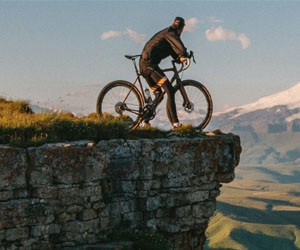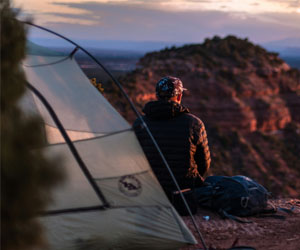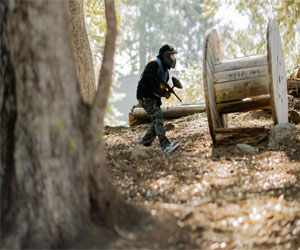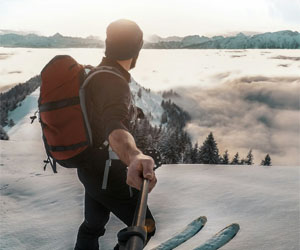


A Thrilling Journey Of Self-Discovery

Mountain biking is a sport that thrives on pushing boundaries and testing the limits of both the rider and the bike. For enthusiasts, the excitement of conquering challenging trails and embracing new adventures is a defining aspect of the sport. Pushing your limits on mountain bike trails isn't just about thrilling descents or technical climbs; it's a journey of self-discovery and a pathway to personal growth.
One of the most compelling aspects of mountain biking is the constant opportunity to challenge yourself. The sport offers a diverse range of terrains, from rocky paths and steep inclines to tight switchbacks and rugged descents. As a rider, pushing your limits means venturing into unfamiliar and demanding territory, where you'll confront obstacles, hone your skills, and gain a deeper understanding of your capabilities.
At its core, pushing your limits on mountain bike trails is about embracing challenges and expanding your comfort zone. Whether you're a beginner seeking to conquer your first challenging hill or an experienced rider aiming to clear a daunting rock garden, each obstacle represents an opportunity to grow. Overcoming these challenges is not only a physical achievement but also a testament to your determination and mental fortitude.
The pursuit of pushing boundaries often leads to self-discovery. Riders learn about their strengths, weaknesses, and resilience when navigating the twists and turns of the trail. Confronting fears and pushing through moments of doubt can be incredibly empowering and lead to personal growth. As you master new skills and conquer previously intimidating terrain, you'll gain a sense of self-confidence that extends beyond mountain biking and into other aspects of life.
Safety is a paramount concern when pushing your limits on mountain bike trails. Riders should prioritize protective gear, including helmets, gloves, and body armor, to reduce the risk of injury. Additionally, ensuring your mountain bike is in excellent working condition, with well-maintained brakes and suspension, is essential for maintaining control on challenging terrain.
Technical proficiency is another crucial aspect of pushing boundaries on the trail. Learning and practicing proper riding techniques, such as body positioning, weight distribution, and obstacle negotiation, are vital for maintaining control and safety in demanding conditions. Off-bike training to enhance physical fitness and endurance can also be beneficial.
Riding with experienced friends or joining group rides can provide valuable support and camaraderie when pushing your limits. Fellow riders can offer guidance, encouragement, and shared experiences, making the journey more enjoyable and inspiring.
Pushing your limits on mountain bike trails is a journey of self-discovery and personal growth. It's about venturing into challenging terrain, confronting obstacles, and expanding your comfort zone. Safety, technical proficiency, and the support of fellow riders play a crucial role in this process. The rewards go beyond the thrill of the ride, leading to increased self-confidence, resilience, and a deeper understanding of your own potential. So, gear up, tackle those challenging trails, and embark on a journey of pushing your limits that will not only elevate your mountain biking skills but also enrich your life.
 Camping allows you to discover the beauty of nature up close and personal. You'll have the chance to witness breathtaking sunrises and sunsets, where the sky is painted in hues of gold and pink. You can explore winding forest trails that lead to hidden waterfalls, or gaze in wonder at the star-studded night sky, free from the glare of city lights. The beauty of the natural world reveals itself in the vibrant colors of wildflowers, the crystal-clear waters of mountain streams, and the towering majesty of ancient trees.
Camping allows you to discover the beauty of nature up close and personal. You'll have the chance to witness breathtaking sunrises and sunsets, where the sky is painted in hues of gold and pink. You can explore winding forest trails that lead to hidden waterfalls, or gaze in wonder at the star-studded night sky, free from the glare of city lights. The beauty of the natural world reveals itself in the vibrant colors of wildflowers, the crystal-clear waters of mountain streams, and the towering majesty of ancient trees.
Furthermore, camping offers a return to the basics of life. With limited access to modern conveniences, you'll learn to appreciate the fundamental elements that sustain us. Building a campfire, cooking a meal over an open flame, and finding shelter in a simple tent or under the open sky harken back to our most primal instincts. This connection to the essentials of survival fosters a sense of self-sufficiency and a deeper appreciation for the resources that nature provides.
Discovering the beauty of camping is also about reconnecting with friends and family. Campfires become gathering places for stories and laughter, where the bond of shared experiences is strengthened. Whether it's toasting marshmallows, playing card games, or simply enjoying each other's company, camping offers a unique setting for building and deepening relationships.
As you venture into the world of camping, you'll find that it's not just about a temporary escape; it's a profound journey that enriches the soul and nurtures a lasting connection to the natural world. Camping is an open invitation to discover the beauty of the Earth, to immerse yourself in the wonders of the great outdoors, and to appreciate the simplicity and tranquility that the wild offers.






Embracing The Call Of The Untamed
 Embracing The Unknown: Exploration and adventure in the wild often involve stepping out of one's comfort zone and embracing the unknown. It's about challenging oneself physically and mentally, venturing into unfamiliar terrain, and experiencing the thrill of the unexpected.
Embracing The Unknown: Exploration and adventure in the wild often involve stepping out of one's comfort zone and embracing the unknown. It's about challenging oneself physically and mentally, venturing into unfamiliar terrain, and experiencing the thrill of the unexpected.
Serenity In The Wilderness: One of the most profound aspects of venturing into the wild is the serenity it provides. In the midst of remote forests, vast deserts, or towering mountains, the noise of the modern world fades away, replaced by the sounds of nature. It's an opportunity to reconnect with one's inner self and experience profound moments of peace and introspection.
Challenging Terrains: Conquering challenging terrains is a central element of wild exploration. From scaling towering peaks to navigating dense jungles or traversing arid deserts, each terrain presents its own unique set of challenges. These challenges test one's physical and mental fortitude, fostering growth and self-discovery.
The Thrill Of The Unknown: The thrill of the unknown is an exhilarating aspect of wild adventure. Every twist and turn in the trail, every hidden waterfall or secret cave, and every encounter with wildlife or the elements provides a rush of excitement. The element of surprise keeps adventurers engaged and creates lasting memories.
Connecting With Nature: Exploration and adventure in the wild allow individuals to connect with nature on a deep and personal level. It's a chance to witness the beauty and complexity of the natural world, fostering a sense of responsibility and a desire to protect these precious ecosystems.
Survival Skills And Self-Reliance: Venturing into the wild often necessitates the development of survival skills and self-reliance. Learning how to build a shelter, purify water, and navigate using basic tools are valuable skills that not only enhance the adventure but also provide a sense of self-assurance.
Embracing Elegance On The Slopes
 3. Mindful Breathing And Relaxation: The connection between body and breath is vital for grace on the slopes. Relaxation and controlled breathing help maintain composure. Focus on deep, intentional breaths to stay calm and centered. Relaxed muscles translate to better balance and improved riding.
3. Mindful Breathing And Relaxation: The connection between body and breath is vital for grace on the slopes. Relaxation and controlled breathing help maintain composure. Focus on deep, intentional breaths to stay calm and centered. Relaxed muscles translate to better balance and improved riding.
4. Choose The Right Terrain: Graceful skiing and snowboarding can be better expressed on certain terrains. Gentle, well-groomed slopes are ideal for practicing elegance. These areas allow you to perfect your form and experiment with your style. As you gain confidence, you can venture into more challenging terrain while still maintaining your grace.
5. Dress For Elegance: Your attire can contribute to your sense of grace. Opt for stylish, well-fitted ski or snowboard gear that not only keeps you warm and protected but also exudes a sense of refinement. Embrace colors and patterns that resonate with your personal style.
6. Develop Your Personal Style: Elegance in snow sports is also about finding your personal style and flair. Some riders prefer a classical approach with flowing turns, while others may embrace a more freestyle and creative style with tricks and jumps. Experiment and discover the style that resonates with you the most.
7. Enjoy The Scenic Beauty: Part of graceful skiing and snowboarding is the appreciation of the natural beauty surrounding you. Take a moment to absorb the breathtaking vistas and snow-covered mountains. Allow the serene surroundings to influence your movements and add depth to your experience.
8. Learn From The Masters: Watching and learning from experienced skiers and snowboarders can provide valuable insights into graceful riding. Study their techniques, mimic their movements, and adapt their styles to develop your grace on the slopes.
Understanding The Risks Of Sports-Related Injuries
 1. Acute Trauma: One of the most immediate risks in sports is acute trauma, which includes injuries such as fractures, dislocations, and concussions. These injuries often occur as a result of sudden, forceful impact and can have severe consequences if not promptly addressed.
1. Acute Trauma: One of the most immediate risks in sports is acute trauma, which includes injuries such as fractures, dislocations, and concussions. These injuries often occur as a result of sudden, forceful impact and can have severe consequences if not promptly addressed.
2. Overuse Injuries: Overuse injuries are another common risk in sports. These injuries develop gradually from repetitive stress on a particular area of the body. Overuse injuries can affect tendons, muscles, and joints, leading to conditions like tendinitis, stress fractures, and muscle strains.
3. Sprains And Strains: Sprains and strains are frequent sports injuries. Sprains involve the stretching or tearing of ligaments, while strains affect muscles or tendons. These injuries often result from improper technique, inadequate warm-up, or overexertion.
4. Dislocations: Dislocations occur when a bone is forcibly pushed out of its joint. Sports that involve sudden impacts or falls, such as football or basketball, carry a higher risk of dislocation injuries.
5. Stress Fractures: Stress fractures are hairline cracks in bones that typically result from repetitive, high-impact activities. Runners, gymnasts, and dancers are particularly susceptible to these injuries.
6. Concussions: Concussions are a type of traumatic brain injury often caused by head impacts, common in contact sports like football and soccer. Proper diagnosis and management of concussions are critical to avoid long-term consequences.
7. Contusions And Bruises: Contusions, commonly known as bruises, are injuries that result from blunt force trauma. While not usually severe, they can be painful and temporarily limit performance.
8. Sprained Ankles: Ankle sprains are a prevalent sports injury, typically occurring when the foot rolls or twists unnaturally. They can vary in severity from mild to severe and may require extended recovery periods.
9. Cuts And Abrasions: Sports that involve contact with hard surfaces or objects may lead to cuts and abrasions. These injuries can range from minor scrapes to more severe lacerations.
The Art Of Riding The Waves
 The Physical Demands: Surfing is an incredibly physically demanding sport. Surfers must paddle out against the force of incoming waves, which can be strenuous. Paddling requires upper body strength and endurance, making surfers some of the fittest athletes. Additionally, maintaining balance on the board, performing maneuvers, and navigating the waves necessitate core strength, agility, and coordination.
The Physical Demands: Surfing is an incredibly physically demanding sport. Surfers must paddle out against the force of incoming waves, which can be strenuous. Paddling requires upper body strength and endurance, making surfers some of the fittest athletes. Additionally, maintaining balance on the board, performing maneuvers, and navigating the waves necessitate core strength, agility, and coordination.
Competitive Surfing: Surfing competitions are a testament to its status as a sport. Events like the World Surf League (WSL) and the Olympics have brought surfing to a global stage. Competitive surfers are judged based on a variety of criteria, including the difficulty of maneuvers, style, flow, and how well they read and ride the waves. These competitions are highly intense, featuring some of the world's most skilled athletes.
The Skill Of Wave Riding: Surfing is an art form that involves a deep understanding of wave dynamics and the ability to harness their power. Surfers read the waves, anticipate their behavior, and position themselves to catch and ride them effectively. Riding waves with style, grace, and precision is an integral part of the sport. From carving and cutbacks to aerial maneuvers, surfers continually push the boundaries of what is possible on a wave.